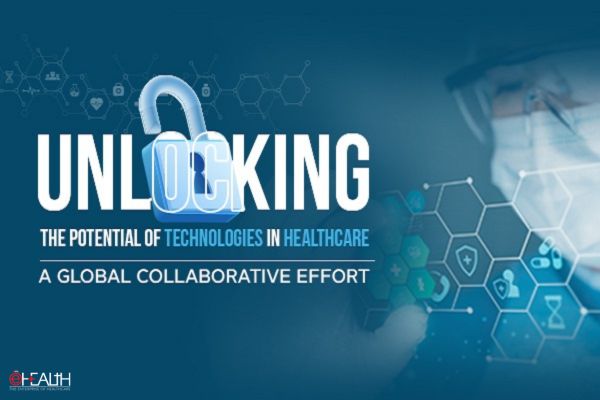
 Health sector is one of the most crucial areas where we can integrate technology to improve healthcare delivery system of the State vis-a-vis the nation, according to Amneet P Kumar, Secretary and Mission Director (NHM), Department of Health & Family Welfare, Government of Haryana.
Health sector is one of the most crucial areas where we can integrate technology to improve healthcare delivery system of the State vis-a-vis the nation, according to Amneet P Kumar, Secretary and Mission Director (NHM), Department of Health & Family Welfare, Government of Haryana.
Haryana is leveraging technology in all sectors to improve delivery of services, Kumar said while participating in e-India Innovation Summit, Chandigarh.

Mentioning of the ground workers, playing a crucial role in enhancing patient care, she said, “In the public health sector, we have foot soldiers of two kinds. Accredited Social Health Activist (ASHA) workers, who act as motivators, and Auxiliary Nurse Midwife (ANM), there are around 7,000 of them across the State. They work at each level, right from the primary health centre, community health centre and district hospitals.”
Also read: ASHA, Anganwadi workers incentives hiked: PM
“The most basic level of service that we provide is immunisation through vaccination process. We believe that for the development of any nation, it is important that each child gets vaccinated to have a healthy future.”

Shedding light on more healthcare initiatives undertaken in recent years, Kumar said, “Another service is mother and child care. Be it in the pregnancy or post-delivery stage, regular medical checkup reduces infant and child mortality rate. These core areas are dealt by ANMs.”
ANMOL SOFTWARE
“The Government of India has developed software, ANM Online or ANMOL, to track their work and create a record of the number of mothers and children they are checking and treating on a daily basis.”
Talking about how the software works, she said, “The base of this software is the 12 registers of reproductive child health. We map the data of all the villages which includes total number of pregnant women, infants, senior citizens, and their addresses with the national-level server.”
“ANMOL is the software which is contingent on the servers from the reproductive child health portal. It was implemented in 12 districts of Haryana last year. It is a tab-based device with the software installed in it. The software data works with an Aadhaar data backup.”
“When a mother comes with her child for vaccination, we take the biometric reading of the mother. In Haryana, most of the children (newborn to six months old) have their Aadhaar Card.”
Also, ANMOL acts as a real-time tracker. It keeps a tab on number of villages and houses our ANMs visited and delivered the medical services. All the records are captured on real time basis. The data is further categorised i.e. who has provided the service, to whom it was provided, and when.
HOW ANMOL SOFTWARE PROVES BENEFICIAL?
Through ANMOL, the ANMs can also track children to be vaccinated or the women whose due date is approaching and act accordingly. The software also provides a detailed module to the government servants, working in the health department.
“The medical officers receive key performance indicators fact sheet. These key performance indicators include family planning achievements, maternal heath achievement etc. If any of the critical indicators is not performing up to the mark, the medical officers and the civil surgeons will get red blinkers in their respective devices. They can then contact the ANMs to seek further information regarding the status of indicators,” Kumar said.
Some other IT innovations in the health sector are High Risk Pregnancy (HRP) Portal, Maternal and Infant Death Review System (MIDRS), Anemia Tracking Module (ATM), Human Resource Information System (HRIS), and Home Based Post Natal Care Portal (HBPNC).
ASHA soft will be implemented for performance monitoring and streamlining the ASHA incentive process.
“Around 115 districts of Haryana, which are aspirational districts, will be replicating this model. Cloud based HRP software is 100 percent in-house built with zero cost. It is very easy to use and replicable software,” she stated.
MIDRS AND HBPNC SOFTWARES
Through the ATM and MIDRS softwares, we have been able to reduce the infant mortality rate. We have also achieved our millennium goal with regard to Maternal Mortality Rate (MMR).
HBPNC is useful software, which gives the data of each and every ASHA worker, she said. “Each ASHA worker is mandated to visit the mother and child at least three to four times post-delivery depending on the gravity of the situation.
The records of each visit in terms of the data of the mother and child are recorded in the software. Owing to the real time assistance, we have been able to reduce the infant mortality rate,” Kumar said.
ASHA soft is another software which is in the process of development. This will be integrated with the ANMOL software so as to ensure dual level monitoring of all the foot soldiers in the health system.
Be a part of Elets Collaborative Initiatives. Join Us for Upcoming Events and explore business opportunities. Like us on Facebook , connect with us on LinkedIn and follow us on Twitter , Instagram.












